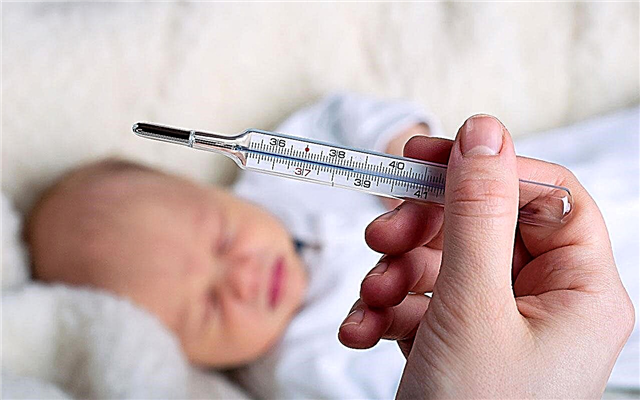The main indicators of the health and full development of the baby are body weight and height. Due to individual characteristics, each baby will have its own rate of weight gain and growth by the fourth month of life. There are certain averaged data, ranges of norms for height and weight.

Individual indicators of weight and height
Baby development at four months
The child of the first year of life is developing rapidly. In just 12 months, he goes from a newborn baby who only knows how to eat and dirty diapers to who can walk, sometimes even run, a mobile and active baby. Moreover, every month he celebrates with his new achievements. At four months, a child, according to pediatricians, should have the following motor skills:
- turn from back to side;
- sit with the support of the hands;
- in a prone position, raise the body, leaning on your hands;
- examine your fingers;
- consider and pick up a toy hanging in front of him;
- show affection for objects - favorite toys appear.
A 4-month-old baby for neuropsychic development should correspond to his age. This means having the following visual and auditory responses, emotions and speech:
- find the source of sound with the eyes;
- react with movements to calm and rhythmic music;
- recognize mom and dad, smile at them;
- laugh in response to laughter addressed to him;
- support the breast or bottle with the mixture with your hands;
- walk for a long time, laugh.
Indicators of physical development of a four-month-old child:
- an increase in body weight in 4 months by 2950 g;
- increase in growth in 4 months by 11 cm.

Physical development at 4 months
Height, weight of a four-month-old baby
To answer the question of how much a child should weigh at 4 months, and how tall he should be at this age, you need to refer to the tables that indicate the ranges of normal (average) height and weight. The tables are compiled separately for boys and girls. Particular attention should be paid to the fact that for babies receiving breast milk substitutes, the values are different.
Weight standards given by WHO
WHO data for babies fed on breast milk
| Indicators in 4 months. | Weight, kg | ||||||
|---|---|---|---|---|---|---|---|
| Below normal | Low | Lower limit of the norm | Norm | The upper limit of the norm | Tall | Above normal | |
| Boys | 4,9-5,6 | 5,6-6,3 | 6,3 | 7,0 | 7,8 | 7,8-8,8 | 8,8-9,8 |
| Girls | 4,5-5,0 | 5,0-5,7 | 5,7 | 6,4 | 7,3 | 7,3-8,2 | 8,2-9,3 |
This table reflects data for term infants weighing more than 2.5 kg at birth.
Bottle-fed babies gain weight faster. Therefore, their rates are slightly higher.
Formula manufacturer weight gain data
| Indicators in 4 months. | Weight range, kg |
|---|---|
| Boys | 6,1-7,7 |
| Girls | 5,8-7,1 |

Bottle-fed babies
At the birth of a premature baby with a small body weight, the average monthly increase should be calculated depending on the birth weight.
Weight gain in a premature baby
| Age, months | Body weight at birth, g. | |||
|---|---|---|---|---|
| 800-1000 | 1001-1500 | 1501-2000 | 2001-2500 | |
| 1 | 180 | 190 | 190 | 300 |
| 2 | 400 | 650 | 700-800 | 800 |
| 3 | 600-700 | 600-700 | 700-800 | 700-800 |
| 4 | 600 | 600-700 | 800-900 | 700-800 |
Growth rates given by WHO
WHO data for breastfed babies
| Indicators in 4 months. | Height, cm | ||||||
|---|---|---|---|---|---|---|---|
| Below normal | Low | Lower limit of the norm | Norm | The upper limit of the norm | Tall | Above normal | |
| Boys | 57,6-59,7 | 59,7-61,8 | 61,8 | 63,9 | 66 | 66,0-68,1 | 68,1-70,1 |
| Girls | 55,6-57,8 | 57,8-59,9 | 59,9 | 62,1 | 64,3 | 64,3-66,4 | 66,4-68,6 |
Formula manufacturer growth kit data
| Indicators in 4 months. | Height range, cm |
|---|---|
| Boys | 61-66 |
| Girls | 60-65 |
Indicators of domestic pediatricians
Every month during the first year of a baby's life, parents should visit a pediatrician for an examination. Each appointment begins with measuring the height and body weight of the baby. It very rarely happens that the obtained indicators suit the doctor. Most often phrases are heard: "he is not eating enough, he should have added 1 kg" or "do not overfeed the child, he is very large." Concerned mothers rush to the doctor with questions: what to do, how to gain or lose weight, and how much you need to weigh in order to meet the norms according to the doctor's tables.
Height and body weight of a child at 4 months, data of domestic pediatricians
| Indicators in 4 months. | Height, cm | Weight. Kg | Head circumference, cm |
|---|---|---|---|
| Boys | 58,7-64,5 | 5,5-7,6 | 40,2-43,6 |
| Girls | 58,4-64,0 | 5,4-7,0 | 39,1-42,2 |

Monthly checkup by a pediatrician
The doctor gives recommendations on how to organize the diet. At home, parents rush for detailed information on the Internet in order to find normal indicators themselves, and find a completely different table with the norms of height and weight for babies, according to which their baby fits into the given norms. This table contains data from the World Health Organization (WHO). It also contains data on how much a boy should weigh at 4 months, and how much a girl should gain at 4 months. But these data differ from the data of the domestic pediatrician.
There are reasons for this difference - tables with national data for pediatricians were compiled in the 90s, they take into account national and geographical characteristics. These data are provided by the manufacturers of artificial mixtures, i.e. observed children who were bottle-fed. While the WHO data are based on well-cared-for children, they were kept in HVs and their mothers did not smoke or drink alcohol during pregnancy and lactation. Also, the studied children did not have any serious illnesses.
Thus, it is the WHO data that make it possible to track the parameters of the growth and weight norms for children, regardless of their place of residence and belonging to any ethnic group.
When the child is not gaining the right weight
In the first days after birth, while still in the hospital, the baby has a decrease in weight. Loss of up to 10% of body weight at birth is considered normal. This is due to the stress suffered during childbirth, the lack of breast milk in the first days of life (lactation begins approximately from the 3rd day after childbirth), as well as the release of meconium. After discharge, on days 4-5, the weight should increase. The increase should be 600-800 g per month. Feed at this age should be breast milk without the introduction of complementary foods.
You should not sound the alarm and panic if the weight of the child does not fit into the norm according to the proposed tables. Before treating a child, it is necessary to assess the following factors that affect the child's growth:
- heredity;
- birth weight;
- mom's nutrition during pregnancy;
- the physical condition of the mother during the gestation period;
- dietary habits and lifestyle;
- nationality and place of residence.
At 4 months, the first milk teeth can begin to grow, while the baby becomes capricious and loses his appetite. If the gums are swollen, and a finger constantly stretches into the mouth, you can relieve suffering - with a special gel to smear the places of redness in the mouth, rub in the gel with a cooling and analgesic effect. It is also necessary to help scratch the gums, for this you can purchase a special silicone brush, which is put on your finger, and in this way regularly "brush" your teeth. There are special teethers on sale - silicone toys filled with water. They must be pre-cooled in the refrigerator and given to the baby, he will be happy to "procrastinate" them.
Important! Do not give dryers, crackers, apples, bananas and other foods that you can bite off at this age. A child can choke on a piece without even having teeth.

Underweight
The reasons for underweight can be the following:
- a breastfed baby has a lack of breast milk;
- in a bottle-fed child - the wrong choice of mixture, low calorie content, a lack of proteins and fats in it;
- if he eats enough, but the weight still does not increase, it is necessary to pass tests for worm eggs;
- disruption in the work of the stomach, in which food is not absorbed or only partially absorbed.
Important! If a child cries often, greedily sucks a breast or a bottle, the weight gain for all 4 months was less than 2 kg, while he has dry skin, there is reason to assume that problems have arisen with the development of the child. First of all, you need to contact a pediatrician who will carry out a control weighing and accurately determine the weight gain.
If the child does not gain weight due to lack of food, and serious illnesses are excluded, then the following rules must be adhered to:
- Apply to the breast more often, reduce the intervals between feedings. More milk will be produced and the baby will eat up.
- Do not give the second breast until the milk in the first breast runs out, since the most high-calorie milk is produced at the end.
- If breast milk is still not enough, supplement with an adapted infant formula.
- Make sure your baby is properly gripping the nipple or teat on the bottle. Perhaps the reason is the short bridle under the tongue.
- As a very last resort for weight gain, early complementary foods can be introduced with the approval of the pediatrician. Start with gluten-free cereals: buckwheat and rice.
The child is overweight
Just as often, as underweight, babies under 1 year of age are overweight.
Excess weight can cause a serious illness - diabetes mellitus, as well as slow down overall development and disrupt the work of internal organs.
Overweight reasons:
- Overeating, most often it happens to children who are bottle-fed;
- Early introduction of complementary foods without special indications for this;
- Disruption of the thyroid gland.
Important! An overweight child is a reason to consult an endocrinologist and take a blood sugar test.

Overweight
How to bring your weight back to normal:
- Replace the nipple on the bottle, the hole should be very small, the child should suck the mixture with effort.
- Replace the mixture with a less nutritious one.
- A nursing mother to reconsider her diet. Eat properly so that milk does not become more nutritious.
- Offer to drink water.
- Do not offer breasts on demand, the baby must get hungry. If after the previous feeding 1 hour has passed, and the child then ate, then the crying of the child is most likely not associated with hunger. It just needs attention.
- Do gymnastics and massage regularly, increase the baby's physical activity.
Before measuring height with a tape measure or a ruler, hanging on a scale, it would be nice for mom and dad to look in the mirror and evaluate their own performance. Then there will be much less worries.



